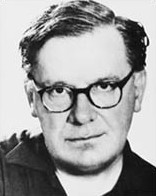Nikos Engonopoulos facts for kids
Nikos Engonopoulos (born October 21, 1907 – died October 31, 1985) was a famous Greek painter and poet. He was a very important artist from a group called the "Generation of the '30s". He was also a leading figure in the Surrealist art movement in Greece. Besides his art, he also wrote reviews and essays.
Contents
About Nikos Engonopoulos
Nikos Engonopoulos was born in Athens, Greece, in 1907. He was the second son of Panagiotis and Errietti Engonopoulos. In 1914, his family traveled to Constantinople. They had to stay there because World War I had just started.
In 1923, Nikos went to a high school in Paris, France. He studied there for four years. After returning to Greece, he joined the army for his mandatory military service. Later, he worked as a translator for a bank. He also worked as a secretary at the University of Athens. From 1930 to 1933, he was a designer for the Greek Ministry of Public Works. He helped plan cities.
His Art Education
In 1932, Nikos Engonopoulos started studying at the Athens School of Fine Arts. He learned from famous teachers like Konstantinos Parthenis and Yannis Kefallinos. He also took classes at Photis Kontoglou's art studio. There, he learned about Byzantine art.
During this time, he met other important artists. These included the poet Andreas Embirikos and the painters Yannis Tsarouchis and Giorgio de Chirico. Engonopoulos later said that Embirikos and de Chirico were his main inspirations for Surrealism.
First Steps in Art and Poetry
Nikos Engonopoulos showed his first paintings in January 1938. These paintings were mostly made with tempera paint on paper. They showed old houses. Soon after, he published his translations of poems by Tristan Tzara.
A few months later, his first collection of poems came out. It was called Do Not Distract the Driver. The next year, he published another collection, The Clavicembalos of Silence. Many people think he was one of Greece's best Surrealist poets.
Major Works and Achievements
Engonopoulos had his first solo art show in 1939. Three years later, he finished his most famous long poem. It was called Bolivar, a Greek Poem. This poem was inspired by the revolutionary leader Simón Bolívar. It was published in 1944. In 1968, the poem was even turned into a song with music by Nikos Mamangakis.
After World War II, he helped start an art group called Armos. In 1954, he was chosen to represent Greece at the Venice Biennale, a big art exhibition. The next year, he took part in the Biennale of São Paulo.
In 1958, he won the First Poetry Award from the Greek Ministry of Education. In 1966, he received the Gold Cross of George I for his contributions to the arts. In 1967, he became a painting professor at the National Technical University of Athens. He taught there until he retired in 1973.
His Legacy
Nikos Engonopoulos passed away in Athens in 1985 from a heart attack. He was married twice. First, he married artist Nelly Andrikopoulou from 1950 to 1954. Then, in 1960, he married Eleni Tsiokou, and they had a daughter together.
Engonopoulos is known for bringing Surrealism to Greece. His artworks often mix elements from Greek traditions, history, and religion. He combined these with his own unique, sometimes sarcastic, style. His paintings can be found in many important collections. These include the National Gallery of Greece and the Benaki Museum.
See also
- Andreas Embirikos
- Art in modern Greece
- National Gallery of Greece


